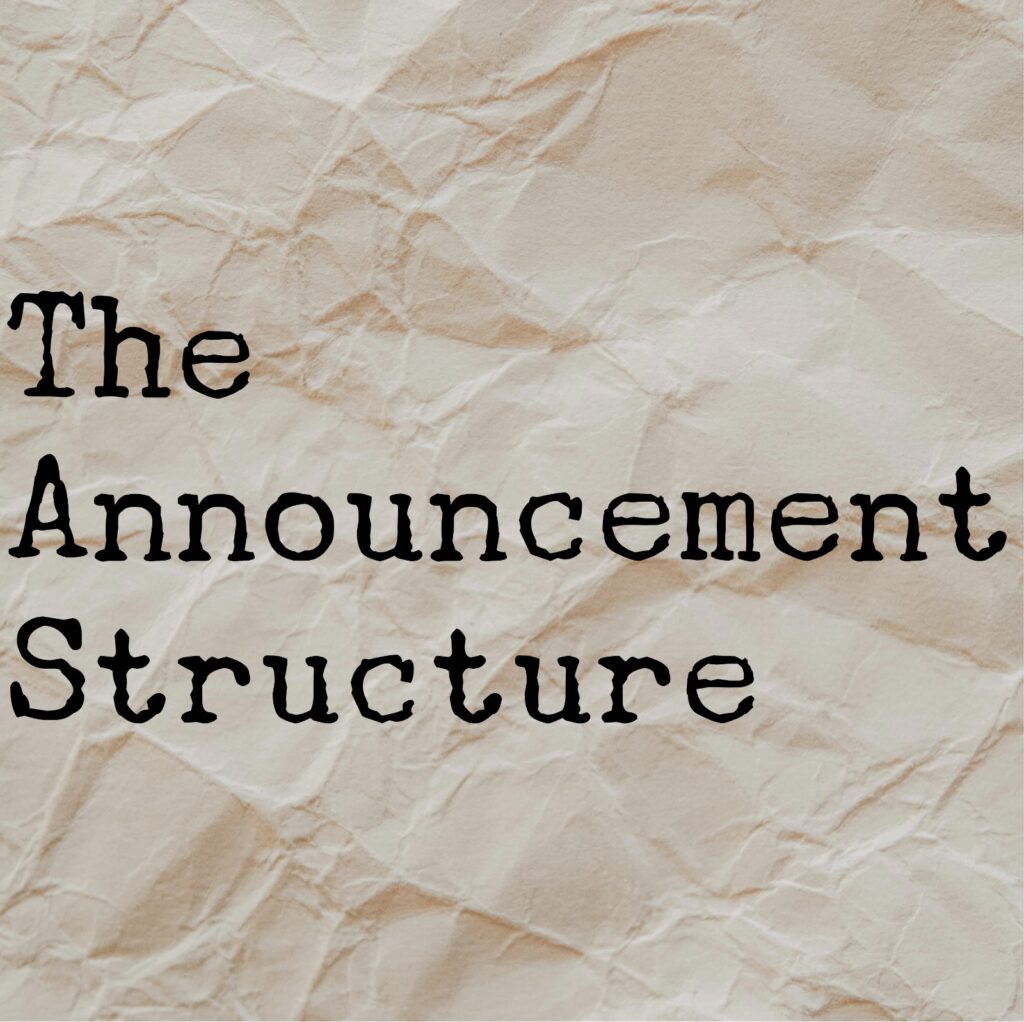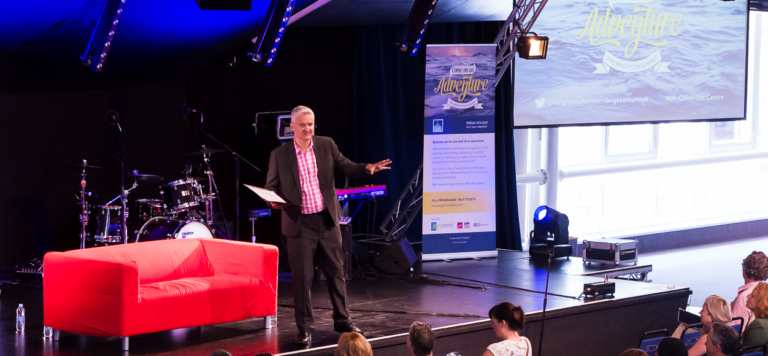2nd February 2024
The Announcement Structure

The announcement structure: Can you blame it, name it, explain it and exemplify it?
At a recent Speech Club event, I referenced the speaker Emilie Wapnick using one of my favourite speech structures when introducing their key concept of the ‘multipotentialite’. After some of the attendees asked for more detail on that structure, I thought it warranted a little more explanation. Watch the speech I reference below if you want to see this structure in action.
This structure, which I call ‘The Announcement Structure’, is perfect if you want to introduce your audience to a new concept, perhaps a new word (such as ‘multipotentialite’), a new model, a new acronym or abbreviation or even a new product or service. Anything that solves a problem in a new way or gives something new a name or approach.
The Announcement Structure is very simple:
- Blame it
- Name it
- Explain it
- Exemplify it
Blame it: You start by outlining the issue you are setting out to solve, ‘blaming it’ for the problems it causes – perhaps low sales, lack of engagement, low morale or motivation. Make sure this is a problem people will recognise (and agree with) – something that affects them personally, not just the corporate whole. In the speech we watched at Speech Club, the issue was people being forced to choose to follow one thing in their lives even when they wanted to follow multiple avenues, leading to a restriction of choice and a singular view of the world.
Name it: Give your solution, approach or concept a name – a word, a phrase, an acronym or abbreviation. Make it memorable and punchy. Preferably something unique – or at the very least something that doesn’t just sound or look like something your audience have heard of before. In Emilie Wapnick’s speech, they named their solution ‘multipotentialite’.
An additional tip on this stage of your speech, demonstrated by Wapnick: Don’t just ‘say’ that name – ‘unveil’ it. Give it some theatricality. Slow down as you build up to that ‘unveiling’ moment, pause – and then announce the name slowly, clearly and with total commitment. Bring it up on a slide, especially if it’s a complex word or phrase – but on its own with nothing to distract. Repeat the name, pause – and then move on to the next stage. This is the key moment of your presentation so take your time, enjoy it and don’t just throw it away.
Explain it: Now it’s time to tell your audience what this name actually refers to. Explain the concept, approach or model. Define it. Keep your explanation straightforward and easy to understand. Use short sentences, everyday language and avoid any jargon. By the end of this section of your presentation, every audience member should understand clearly what you’re talking about to the point that they could pass that information on to others in simple language. If you’re struggling to find everyday language, ask yourself how you would explain this concept to a friend in the pub.
Exemplify it: Show us how this concept, model etc works in the real world. Note I say ‘show’ – not ‘tell’. This is where you need to move away from the abstract or theoretical and show your audience this concept in action. Ideally have more than one example but make them different so we see it in action in different circumstances. You might use a story, a video or a third-party testimonial to help show this in action.
Wapnick uses three examples in her speech but they’re all very similar and all unknown to the audience. As we discussed at Speech Club, it might have made for a more engaging section of the speech if she’d used one ‘ordinary person’, one celebrity and perhaps herself as the third example.
There are two optional additional sections you can add to this structure, one at the beginning and one at the end:
Preview it: You can open your speech by telling people how you’re about the introduce them to something new that will help them solve a problem – without telling them what that is at this stage. For example, Wapnick could have opened with a line such as ‘In 12 minutes time, half of you in the room today are going to have a new word to describe yourselves and your approach to life and work’. That sets up a sense of intrigue and expectation and starts the build towards the theatricality of the ‘name it’ moment in the speech.
Apply it: This is the close of your speech and may well be your call to action to the audience, telling them what you want them to do with what you’ve just told them and how to apply your model/concept to their own lives or roles. Phrases you might use here include ‘If you do one thing as a result of what I’ve just told you…’ or ‘Now it’s over to you, to use/embrace/apply this to X problem – let me know how you get on’ or even a really specific instruction such as ‘to join me on this crusade, sign up now at….’
However you ask or tell people to apply it, make your call to action short, direct and easy to follow. One action, not a series of actions and make it specific. ‘I’d like you think about…’ is not specific. ‘Answer one question on this QR code to tell me how this is going to change your life’ is.
So, that’s it – the announcement structure.
(Preview it)
Blame It
Name It
Explain It
Exemplify It
(Apply it)
Tell me in the comments below how you’ll be using this in your presentations.

